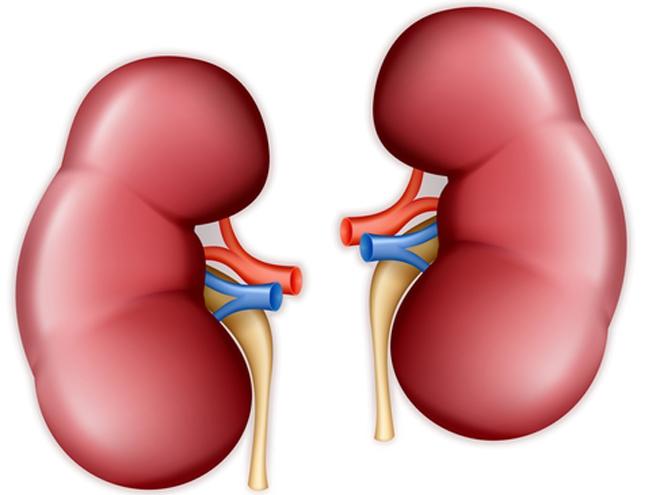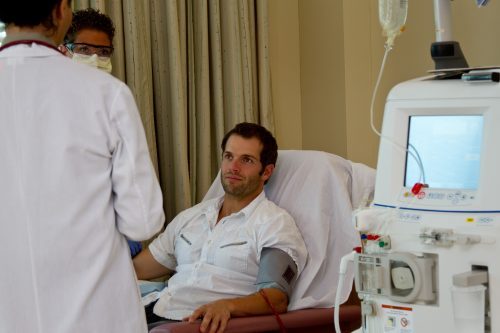
COVID-19 is essentially an acute respiratory illness that in some patients, especially vulnerable groups, can be fatal. High-risk patients include the elderly and the immunocompromised or immunosuppressed, as well as those with a history of chronic pulmonary disease, asthma, and diabetes. Recent reports in the media suggest a spike in kidney failure placing a significant strain on the availability of dialysis spots and dialysis machines in the midst of the COVID-19 pandemic. How common is kidney failure and what causes it?
Recent reports from China indicate that acute kidney injury (AKI) occurs in about 25% of critically ill COVID-19 patients.1,2 The one exception is a study by Wang et al who report on 116 COVID-19-confirmed patients hospitalized at Renmin Hospital in Wuhan University from January 14, 2020, to February 13, 2020.3 In their study the incidence was less than 5%.
Italian data in more than 2000 patients published in Critical Care reinforces an AKI incidence of 27.8% among hospitalized COVID-19 patients.4 AKI develops approximately 9 days after admission and is accompanied by cardiac complications and secondary infections. The risk factors for AKI include, age, severity of illness, and the presence of diabetes.
In the US, very limited published data are available. However, anecdotal reports indicate that AKI is not an uncommon finding and the prevalence numbers are in the 25% range. AKI seems to accompany acute respiratory distress syndrome (ARDS) and is thought to result from the cytokine storm that also causes a coagulopathy, cardiac injury, and hemodynamic compromise. However, while there is a fairly large literature on viral infections causing kidney disease, whether SARS-CoV2 binding to kidney epithelial cells results in direct nephrotoxicity remains elusive.
Not all coronavirus infections are associated with AKI; for example, the common cold is not. However, both the Middle East Respiratory Syndrome Coronavirus (MERS-CoV) and the severe Acute Respiratory Syndrome Coronavirus (SARS-CoV) do appear to be associated with AKI, but through distinct pathways and with a different natural history.5 MERS-CoV enters cells via binding to dipeptidyl-peptidase 4 (DPP-4), whereas the SARS-CoV via the angiotensin-converting-enzyme-2 (ACE-2) receptor (like SARS-CoV-2 also binds via ACE-2). Both DPP-4 and ACE-2 are expressed in several human tissues, including the kidney.
Eckerle et al in 2003 in the Virology Journal5 report that AKI occurs relatively early in MERS-CoV patients (at 11 days), whereas in SARS-CoV at around 20 days. With COVID-19, AKI is observed generally earlier (7-10 days) rather than later.
A recent unpublished study of 85 patients from Wuhan China6 with laboratory-confirmed COVID-19 from Wuhan China confirms an AKI incidence rate of 27.06%. The study included postmortem analysis in six patients. On light microscopy there was severe acute tubular necrosis and lymphocyte infiltration. The infiltration contained CD68+ macrophages. Immunohistochemistry of kidney epithelial cells stained positive for SARS-CoV-2 NP antigen. Immunofluorescence showed complement C5b-9 deposition in tubules, and virus like particles were observed by electron microscopy in the renal epithelial cells.
Earlier reports do point to direct nephrotoxicity from the coronavirus.7,8 Comparative infection experiments with SARS- and MERS-CoV in primary human kidney cells versus primary human bronchial epithelial cells showed cytopathogenic infection only in kidney cells. MERS-CoV appears particularly nephrotoxic and seems to have a predilection to kidney over bronchial epithelial cells. In this regard, SARS CoV-2 seems to be behaving more toward MERS-CoV rather than SARS-CoV.
In summary, from what we know so far, there are likely to be two causes of AKI; one is related to a systemic syndrome with origins in the cytokine storm and the second is direct nephrotoxicity from SARS CoV-2 binding the ACE2 receptor on kidney epithelial cells. Management of the nephrotoxic effects of SARS CoV-2 will likely require antiviral agents, which at least thus far, has only been possible in the context of clinical trials.
References
- Yang X, Yu Y, Xu J, et al. Clinical course and outcomes of critically ill patients with SARS-CoV-2 pneumonia in Wuhan, China: a single-centered, retrospective, observational study. Lancet Respir Med 2020; published online Feb 21. doi: 10.1016/S2213-2600(20):30079-5. [PMC free article] [PubMed]
- Fei Zhou, Ting Yu, Ronghui Du et al. Clinical course and risk factors for mortality of adult inpatients with COVID-19 in Wuhan, China: a retrospective cohort study. Lancet 2020; published Online March 9 doi: 10.1016/S0140-6736(20)30566-3.
- Wang L, Li X, Chen H, Yan S, Li D, Li Y, Gong Z. Coronavirus Disease 19 Infection Does Not Result in Acute Kidney Injury: An Analysis of 116 Hospitalized Patients from Wuhan, China. Am J Nephrol. 2020 Mar 31:1-6. doi: 10.1159/000507471. [Epub ahead of print] PubMed PMID: 32229732.
- Report of “Istituto Superiore di Sanità” (https://www.epicentro.iss.it/coronavirus/bollettino/Report-COVID-2019_17_marzo-v2.pdf). Fanelli V, Fiorentino M, Cantaluppi V, et al. Acute kidney injury in SARS-CoV-2 infected patients. Crit Care. 2020;24(1):155. Published 2020 Apr 16. doi:10.1186/s13054-020-02872-z
- Eckerle I, Müller MA, Kallies S, Gotthardt DN, Drosten C. In-vitro renal epithelial cell infection reveals a viral kidney tropism as a potential mechanism for acute renal failure during Middle East Respiratory Syndrome (MERS) Coronavirus infection. Virol J. 2013;10:359. Published 2013 Dec 23. doi:10.1186/1743-422X-10-359 https://www.ncbi.nlm.nih.gov/pmc/articles/PMC3878046/
- Daio B, Wang C, Wang R et al Human Kidney is a Target for Novel Severe Acute Respiratory Syndrome Coronavirus 2 (SARS-CoV-2) Infection https://www.medrxiv.org/content/10.1101/2020.03.04.20031120v4
- Chu KH, Tsang WK, Tang CS, Lam MF, Lai FM, To KF, Fung KS, Tang HL, Yan WW, Chan HW, Lai TS, Tong KL, Lai KN. Acute renal impairment in coronavirus-associated severe acute respiratory syndrome. Kidney Int. 2005 Feb;67(2):698-705. PubMed PMID: 15673319; PubMed Central PMCID: PMC7112337.







 © 2025 Mashup Media, LLC, a Formedics Property. All Rights Reserved.
© 2025 Mashup Media, LLC, a Formedics Property. All Rights Reserved.